Data Structures and Algorithms
- Introduction to Data Structures and Algorithms
- Time and Space Complexity Analysis
- Big-O, Big-Theta, and Big-Omega Notations
- Recursion and Backtracking
- Divide and Conquer Algorithm
- Dynamic Programming: Memoization vs. Tabulation
- Greedy Algorithms and Their Use Cases
- Understanding Arrays: Types and Operations
- Linear Search vs. Binary Search
- Sorting Algorithms: Bubble, Insertion, Selection, and Merge Sort
- QuickSort: Explanation and Implementation
- Heap Sort and Its Applications
- Counting Sort, Radix Sort, and Bucket Sort
- Hashing Techniques: Hash Tables and Collisions
- Open Addressing vs. Separate Chaining in Hashing
- DSA Questions for Beginners
- Advanced DSA Questions for Competitive Programming
- Top 10 DSA Questions to Crack Your Next Coding Test
- Top 50 DSA Questions Every Programmer Should Practice
- Top Atlassian DSA Interview Questions
- Top Amazon DSA Interview Questions
- Top Microsoft DSA Interview Questions
- Top Meta (Facebook) DSA Interview Questions
- Netflix DSA Interview Questions and Preparation Guide
- Top 20 DSA Interview Questions You Need to Know
- Top Uber DSA Interview Questions and Solutions
- Google DSA Interview Questions and How to Prepare
- Airbnb DSA Interview Questions and How to Solve Them
- Mobile App DSA Interview Questions and Solutions
DSA Interview Questions
- DSA Questions for Beginners
- Advanced DSA Questions for Competitive Programming
- Top 10 DSA Questions to Crack Your Next Coding Test
- Top 50 DSA Questions Every Programmer Should Practice
- Top Atlassian DSA Interview Questions
- Top Amazon DSA Interview Questions
- Top Microsoft DSA Interview Questions
- Top Meta (Facebook) DSA Interview Questions
- Netflix DSA Interview Questions and Preparation Guide
- Top 20 DSA Interview Questions You Need to Know
- Top Uber DSA Interview Questions and Solutions
- Google DSA Interview Questions and How to Prepare
- Airbnb DSA Interview Questions and How to Solve Them
- Mobile App DSA Interview Questions and Solutions
Introduction to High-Level System Design
System Design Fundamentals
- Functional vs. Non-Functional Requirements
- Scalability, Availability, and Reliability
- Latency and Throughput Considerations
- Load Balancing Strategies
Architectural Patterns
- Monolithic vs. Microservices Architecture
- Layered Architecture
- Event-Driven Architecture
- Serverless Architecture
- Model-View-Controller (MVC) Pattern
- CQRS (Command Query Responsibility Segregation)
Scaling Strategies
- Vertical Scaling vs. Horizontal Scaling
- Sharding and Partitioning
- Data Replication and Consistency Models
- Load Balancing Strategies
- CDN and Edge Computing
Database Design in HLD
- SQL vs. NoSQL Databases
- CAP Theorem and its Impact on System Design
- Database Indexing and Query Optimization
- Database Sharding and Partitioning
- Replication Strategies
API Design and Communication
Caching Strategies
- Types of Caching
- Cache Invalidation Strategies
- Redis vs. Memcached
- Cache-Aside, Write-Through, and Write-Behind Strategies
Message Queues and Event-Driven Systems
- Kafka vs. RabbitMQ vs. SQS
- Pub-Sub vs. Point-to-Point Messaging
- Handling Asynchronous Workloads
- Eventual Consistency in Distributed Systems
Security in System Design
Observability and Monitoring
- Logging Strategies (ELK Stack, Prometheus, Grafana)
- API Security Best Practices
- Secure Data Storage and Access Control
- DDoS Protection and Rate Limiting
Real-World System Design Case Studies
- Distributed locking (Locking and its Types)
- Memory leaks and Out of memory issues
- HLD of YouTube
- HLD of WhatsApp
System Design Interview Questions
- Adobe System Design Interview Questions
- Top Atlassian System Design Interview Questions
- Top Amazon System Design Interview Questions
- Top Microsoft System Design Interview Questions
- Top Meta (Facebook) System Design Interview Questions
- Top Netflix System Design Interview Questions
- Top Uber System Design Interview Questions
- Top Google System Design Interview Questions
- Top Apple System Design Interview Questions
- Top Airbnb System Design Interview Questions
- Top 10 System Design Interview Questions
- Mobile App System Design Interview Questions
- Top 20 Stripe System Design Interview Questions
- Top Shopify System Design Interview Questions
- Top 20 System Design Interview Questions
- Top Advanced System Design Questions
- Most-Frequented System Design Questions in Big Tech Interviews
- What Interviewers Look for in System Design Questions
- Critical System Design Questions to Crack Any Tech Interview
- Top 20 API Design Questions for System Design Interviews
- Top 10 Steps to Create a System Design Portfolio for Developers
Mobile App DSA Interview Questions and Solutions
Before we dive into the detailed discussion, check out our free course updates and exclusive free courses to stay ahead of the curve in your technical preparation.
Introduction to Mobile App DSA Interviews
Data Structures and Algorithms (DSA) form the backbone of technical interviews, especially for mobile app development roles. In today’s competitive environment, mastering these concepts is essential for cracking interviews. Mobile app DSA interviews test not only your coding skills but also your problem-solving abilities, analytical thinking, and understanding of efficient design patterns.
Mobile app companies value candidates who can articulate their reasoning and optimize solutions effectively. This article is designed to be an all-encompassing guide to help you prepare for DSA questions in mobile app interviews. As you read along, you will discover expert strategies, coding examples, and detailed explanations that simplify even the toughest problems.
Also Read: Low-Level Design of YouTube Recommendations.
Key Concepts in Data Structures and Algorithms
Grasping the fundamental concepts in DSA is a stepping stone to interview success. Mobile app developers need to be proficient in a variety of data structures and algorithmic paradigms that optimize app performance and enhance user experience.
Understanding DSA is not just about writing code; it’s about designing solutions that are scalable and maintainable. The following points highlight key areas that you need to master:
- Arrays and Strings: These are basic yet essential building blocks. They help in understanding memory management and manipulation.
- Linked Lists: Vital for dynamic data storage; frequently come up in questions about list operations and memory allocation.
- Stacks and Queues: Crucial for managing order and sequence of operations, especially in app navigation and undo-redo functionalities.
- Trees and Graphs: Used for hierarchical data representation and network connectivity, important for structuring user interfaces and real-time communication.
- Sorting and Searching Algorithms: Fundamental for optimizing data retrieval and processing.
Core Data Structures Comparison
Below is a table comparing common operations on various data structures, which is essential for evaluating the best approach during an interview:
|
Data Structure |
Insertion |
Deletion |
Search |
Memory Overhead |
Use Case |
|
Array |
O(n) |
O(n) |
O(n) |
Low |
Static data storage |
|
Linked List |
O(1) |
O(1) |
O(n) |
Medium |
Dynamic data where order matters |
|
Stack |
O(1) |
O(1) |
O(n) |
Low |
Function calls, expression evaluation |
|
Queue |
O(1) |
O(1) |
O(n) |
Low |
Scheduling tasks, breadth-first search |
|
Tree |
O(log n) |
O(log n) |
O(log n) |
High |
Hierarchical data, file systems |
|
Graph |
Varies |
Varies |
Varies |
High |
Social networks, recommendation systems |
By mastering these concepts, you are not only prepared to answer interview questions but also equipped to implement efficient solutions that drive real-world mobile app performance.
Also Read: Top 10 DSA Questions on Linked Lists and Arrays.
Mobile App DSA Interview Questions
Candidates are often tested with questions that challenge their understanding and practical application of DSA concepts. These questions are designed to assess your ability to think critically and solve problems under time constraints.
Common Interview Questions
Some frequently asked questions in mobile app DSA interviews include:
- How do you reverse a linked list?
- What is the difference between a stack and a queue?
- How would you optimize a search algorithm for a large dataset?
- Can you explain the concept of recursion and give an example?
- How do you approach a problem that requires both space and time optimization?
What Interviewers Look For
Interviewers focus on several key aspects:
- Problem Understanding: The clarity of your approach and the steps you take.
- Efficiency: Time and space complexity of your solution.
- Coding Skills: Ability to write clean, bug-free code.
- Communication: How well you explain your logic and reasoning.
- Adaptability: Your response to follow-up questions or modifications in the problem statement.
A clear understanding of these areas will help you tackle even the most challenging questions with confidence.
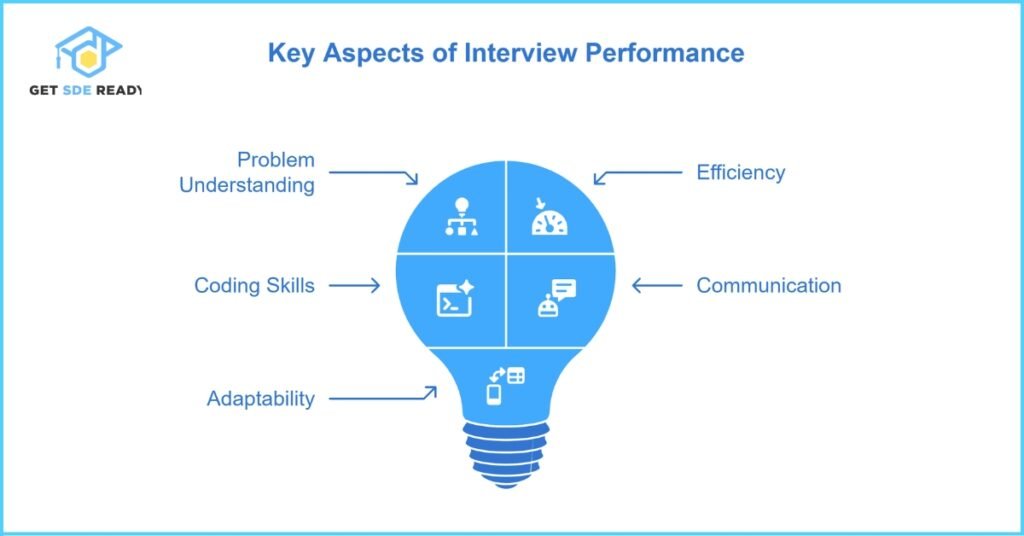
Hands-on Coding Examples
Practical coding examples solidify your understanding and prepare you for the live coding rounds. This section provides real code snippets and detailed explanations to help you see the direct application of theory.
Coding Example: Detecting a Cycle in a Linked List
One common challenge is to detect a cycle in a linked list. The “Floyd’s Cycle Detection” algorithm is a popular solution:
def has_cycle(head):
slow = head
fast = head
while fast and fast.next:
slow = slow.next
fast = fast.next.next
if slow == fast:
return True
return False
Explanation:
- Two pointers, slow and fast, traverse the list at different speeds.
- If a cycle exists, the fast pointer will eventually meet the slow pointer.
- If they never meet, the list is acyclic.
Additional Coding Examples
Here are more examples to illustrate your approach:
- Binary Search: Efficient for finding an element in a sorted array.
- Merge Sort: An effective algorithm for sorting large datasets.
- Dynamic Programming: Useful for problems like the Fibonacci series and knapsack.
Table: Comparison of Sorting Algorithms
|
Algorithm |
Average Time Complexity |
Best For |
|
Bubble Sort |
O(n²) |
Small datasets, simple implementation |
|
Merge Sort |
O(n log n) |
Large datasets, stable sorting |
|
Quick Sort |
O(n log n) |
In-place sorting, average case performance |
|
Insertion Sort |
O(n²) |
Nearly sorted datasets |
Key Takeaways:
- Choose the right algorithm based on the data and context.
- Understand trade-offs between time complexity and ease of implementation.
- Practice coding examples to build muscle memory for coding interviews.
This hands-on approach will ensure you are comfortable with both the theory and practice of solving DSA problems.
Also Read: Why System Design Interviews Are Tough.
Interview Strategies and Problem-Solving Techniques
Success in mobile app interviews goes beyond having the right answers; it involves strategic thinking and a structured approach to problem-solving. Here, we explore methods that can give you a competitive edge.
Effective Interview Techniques
A successful interview strategy involves:
- Active Listening: Carefully understand the question before answering.
- Clarifying Doubts: Ask clarifying questions if the problem statement is vague.
- Thinking Aloud: Share your thought process to demonstrate your problem-solving approach.
- Time Management: Balance between speed and accuracy during your coding session.
Best Practices in Problem-Solving
Here are some practical tips to excel:
- Practice Regularly: Consistent practice with diverse problems sharpens your skills.
- Mock Interviews: Simulate interview scenarios with peers or mentors.
- Revise Fundamentals: Regularly review core DSA concepts to keep them fresh in your mind.
- Stay Updated: Follow industry trends and new algorithmic challenges emerging in mobile app development.
- Bullet Points for Quick Review:
- Active listening and clarifications.
- Time management during live coding.
- Continuous practice and self-assessment.
- Balancing theoretical knowledge with practical application.
- Active listening and clarifications.
Implementing these techniques can significantly boost your performance, ensuring you present the best version of your technical and analytical skills.
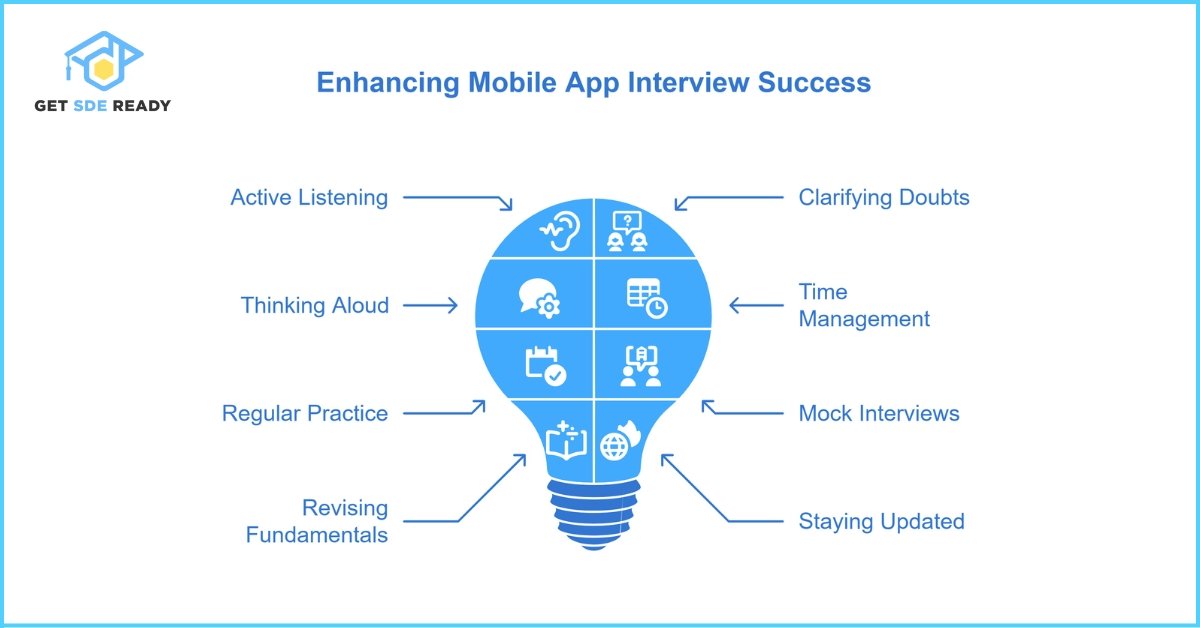
Also Read: Top 20 API and RESTful Design Questions.
Optimizing Mobile App Performance with DSA
In mobile app development, efficiency isn’t just a luxury—it’s a necessity. Optimizing data structures and algorithms can lead to faster response times, reduced battery usage, and an overall smoother user experience.
Performance Optimization Strategies
Key strategies include:
- Choosing the Right Data Structure: Each data structure has its pros and cons. For example, arrays are great for random access, while linked lists offer dynamic memory allocation.
- Algorithmic Efficiency: Opt for algorithms with lower time complexities. Understand the trade-offs between recursive and iterative solutions.
- Memory Management: Efficient memory usage is crucial in mobile apps where resources are limited.
Table: Mobile App Performance Metrics
|
Metric |
Importance |
Optimization Focus |
|
Response Time |
Critical for UX |
Algorithm efficiency, caching |
|
Battery Consumption |
Key for mobile devices |
Efficient coding, low overhead |
|
Memory Usage |
Affects app stability |
Optimal data structure choice |
|
Load Handling |
Important for scalability |
Distributed systems, optimization |
Real-world Application
Consider how a simple algorithm can affect app performance. A well-optimized search algorithm can decrease response times from seconds to milliseconds, significantly improving the user experience. Furthermore, efficient coding practices can lead to lower battery consumption—a critical factor for mobile users.
- Bullet Points for Optimization:
- Select algorithms based on data size and complexity.
- Monitor performance with benchmarking tools.
- Balance between readability and optimization in code.
- Select algorithms based on data size and complexity.
Adopting these practices ensures that mobile apps not only perform well in interviews but also deliver robust performance in production environments.
Also Read: How to Crack DSA Interviews in 3 Months.
Real-World Case Studies and Scenarios
Real-world examples help bridge the gap between theoretical knowledge and practical application. In mobile app DSA interviews, you may be presented with scenarios that mirror challenges faced by leading tech companies.
Case Study: Social Media App Feed Optimization
Imagine a social media app that needs to display a personalized feed in real time. The problem may involve:
- Efficient Data Retrieval: Using optimized search and sort algorithms.
- Dynamic Data Structures: Implementing trees or heaps to manage user data dynamically.
- Scalable Solutions: Designing systems that can handle millions of users simultaneously.
Key Learnings from Case Studies
- Identify Bottlenecks: Evaluate which parts of the system require optimization.
- Iterative Improvement: Refine your solutions through multiple iterations.
- Real-World Impact: Understand how these solutions translate into improved user engagement and retention.
- Bullet Points:
- Real-life scenarios require adapting theoretical knowledge.
- Focus on system scalability and responsiveness.
- Incorporate user feedback and analytics to improve algorithms.
- Real-life scenarios require adapting theoretical knowledge.
By studying such case studies, you can gain insights into how top companies approach DSA problems, preparing you to tackle similar challenges in your interview.
Also Read: Top 15 Full-Stack Dev Interview Questions 2025.
Preparing for Behavioral and Technical Rounds
Interviews today are twofold, involving both behavioral and technical rounds. While DSA is a major part of the technical evaluation, your communication skills and team fit are equally scrutinized.
Behavioral Round Preparation
The behavioral round assesses your soft skills, cultural fit, and problem-solving mindset. Prepare by:
- Practicing Common Questions: Such as “Tell me about a time you overcame a technical challenge.”
- Reflecting on Experiences: Use the STAR method (Situation, Task, Action, Result) to structure your responses.
- Being Honest: Authenticity is key in conveying your true potential.
Technical Round Preparation
For the technical round:
- Review Key Concepts: Revisit data structures, algorithms, and system design basics.
- Engage in Mock Interviews: Simulate real interview scenarios to build confidence.
- Work on Coding Challenges: Practice on platforms like LeetCode, HackerRank, or CodeSignal.
These preparations not only help you ace the technical questions but also build confidence for the overall interview process.
- Bullet Points:
- Behavioral rounds require clear communication and reflection.
- Technical rounds need strong foundational knowledge.
- Balance both aspects to present a well-rounded profile.
- Behavioral rounds require clear communication and reflection.
Approaching your interviews with a comprehensive preparation strategy will give you the necessary edge over other candidates.
Also Read: System Design for Real-Time Chat Apps.
Tools and Resources for DSA Interview Preparation
Leveraging the right tools and resources can make your preparation more structured and effective. This section highlights the top platforms and resources available for honing your DSA skills.
Recommended Online Resources
Some of the best online resources include:
-
- Coding Practice Platforms: LeetCode, HackerRank, CodeChef.
- Video Tutorials: YouTube channels and online courses that cover fundamental and advanced topics.
- Books and Articles: Industry-standard books like “Cracking the Coding Interview” and research articles from reputed tech blogs.
- Coding Practice Platforms: LeetCode, HackerRank, CodeChef.
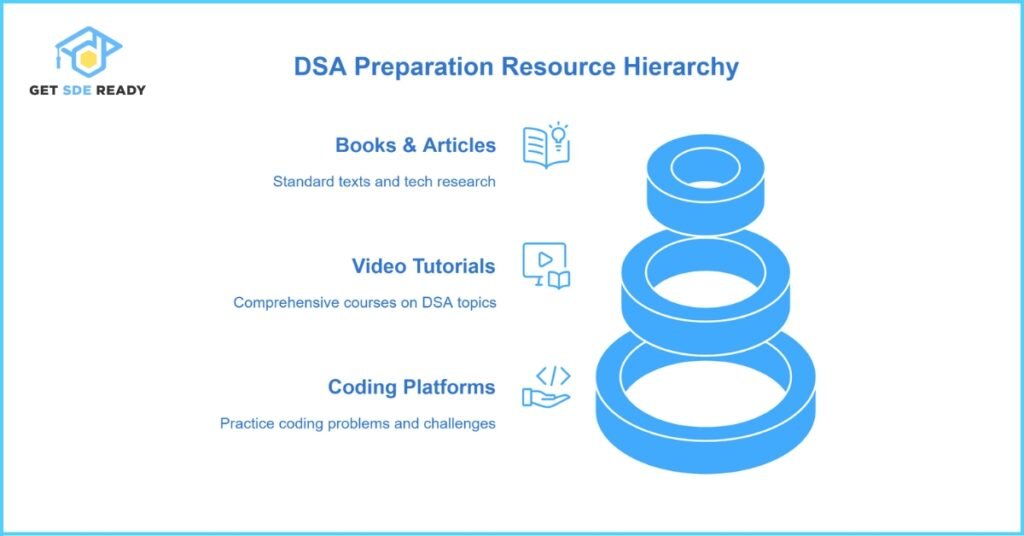
Essential Tools for Preparation
Below is a bullet-point list of tools that can enhance your study process:
- Integrated Development Environments (IDEs): VS Code, PyCharm, and IntelliJ IDEA.
- Version Control: Git for tracking changes and collaborating on code.
- Debugging Tools: Essential for troubleshooting and refining your code.
- Online Communities: Platforms like Stack Overflow and GitHub to collaborate and learn from peers.
Table: Comparison of Popular Coding Platforms
|
Platform |
Features |
Best For |
|
LeetCode |
Wide range of problems, contests |
Interview practice |
|
HackerRank |
Skill assessments, certifications |
Competitive coding |
|
CodeChef |
Monthly contests, community |
Advanced problem solving |
|
CodeSignal |
Real-time coding challenges |
Technical interview simulation |
Utilizing these resources can accelerate your learning curve and build a robust foundation for technical interviews.
Also Read: Top 10 Greedy Algorithms for Programming.
Expert Tips and Industry Insights
Gaining insights from industry experts and learning from real interview experiences can significantly boost your preparation. This section compiles expert tips, recent stats, and quotes from experienced professionals in the tech industry.
Expert Opinions
Many top engineers emphasize the importance of building a strong foundation in DSA. According to a recent survey by Stack Overflow, over 70% of developers believe that deep technical expertise in algorithms is crucial for landing top jobs in tech. Experts recommend that candidates allocate at least 2–3 hours daily to practice coding challenges.
Industry Best Practices
- Consistent Practice: Daily coding sessions are key to retaining problem-solving skills.
- Peer Discussions: Join study groups and participate in coding competitions.
- Feedback Loops: Regularly review your code and seek feedback to identify improvement areas.
- Bullet Points:
- Focus on quality over quantity in practice sessions.
- Stay updated with the latest industry trends.
- Use online forums and mentorship programs for guidance.
- Focus on quality over quantity in practice sessions.
These insights not only prepare you for the immediate interview challenges but also set you up for long-term career success in mobile app development
What are the most common DSA questions asked in mobile app interviews?
Mobile app interviews typically include questions on arrays, linked lists, stacks, and trees. Interviewers also expect you to solve problems related to sorting, searching, and recursion. These questions are designed to test both your conceptual understanding and your ability to implement efficient solutions.
For more structured practice, consider checking out our DSA Course.
How should I approach solving a DSA problem during an interview?
A structured approach involves understanding the problem, drafting pseudocode, implementing the code, and then testing it thoroughly. You should clearly articulate your thought process to the interviewer and justify your choice of data structures. Practicing this systematic method can help build confidence and clarity in your solutions.
Enhance your approach with our Web Development Course.
How can I improve my coding speed and accuracy for DSA interviews?
Absolutely, practicing on paper or a whiteboard can significantly improve your interview performance. It helps simulate the real interview environment where you need to articulate your thought process without the aid of an IDE. Regular practice in this format enables you to organize your ideas better and communicate more effectively under pressure. For more insights on preparing for technical interviews, consider checking out this combined DSA and design course.
What resources are best for learning advanced DSA concepts for mobile apps?
Improving coding speed comes with regular practice and exposure to various problem types. Participate in timed coding challenges and mock interviews to build familiarity with common pitfalls. Focus on writing clean and error-free code, and always review your work after solving each problem.
For more guided practice, explore our Design DSA Combined Course.

DSA, High & Low Level System Designs
- 85+ Live Classes & Recordings
- 24*7 Live Doubt Support
- 400+ DSA Practice Questions
- Comprehensive Notes
- HackerRank Tests & Quizzes
- Topic-wise Quizzes
- Case Studies
- Access to Global Peer Community
Buy for 60% OFF
₹25,000.00 ₹9,999.00
Accelerate your Path to a Product based Career
Boost your career or get hired at top product-based companies by joining our expertly crafted courses. Gain practical skills and real-world knowledge to help you succeed.

Low & High Level System Design
- 20+ Live Classes & Recordings
- 24*7 Live Doubt Support
- Case Studies
- Comprehensive Notes
- HackerRank Tests
- Topic-wise Quizzes
- Access to Global Peer Community
- Interview Prep Material
Buy for 65% OFF
₹20,000.00 ₹6,999.00

Design Patterns Bootcamp
- Live Classes & Recordings
- 24/7 Live Doubt Support
- Practice Questions
- Case Studies
- Access to Global Peer Community
- Topic wise Quizzes
- Referrals
- Certificate of Completion
Buy for 50% OFF
₹2,000.00 ₹999.00

ML & AI Kickstart
- Live Classes & Recordings
- 24/7 Live Doubt Support
- 2 Live Projects
- Case Studies
- Topic wise Quizzes
- Access to Global Peer Community
- Certificate of Completion
- Referrals
Buy for 50% OFF
₹2,000.00 ₹999.00

LLD Bootcamp
- 7+ Live Classes & Recordings
- Practice Questions
- 24/7 Live Doubt Support
- Case Studies
- Topic wise Quizzes
- Access to Global Peer Community
- Certificate of Completion
- Referrals
Buy for 50% OFF
₹2,000.00 ₹999.00
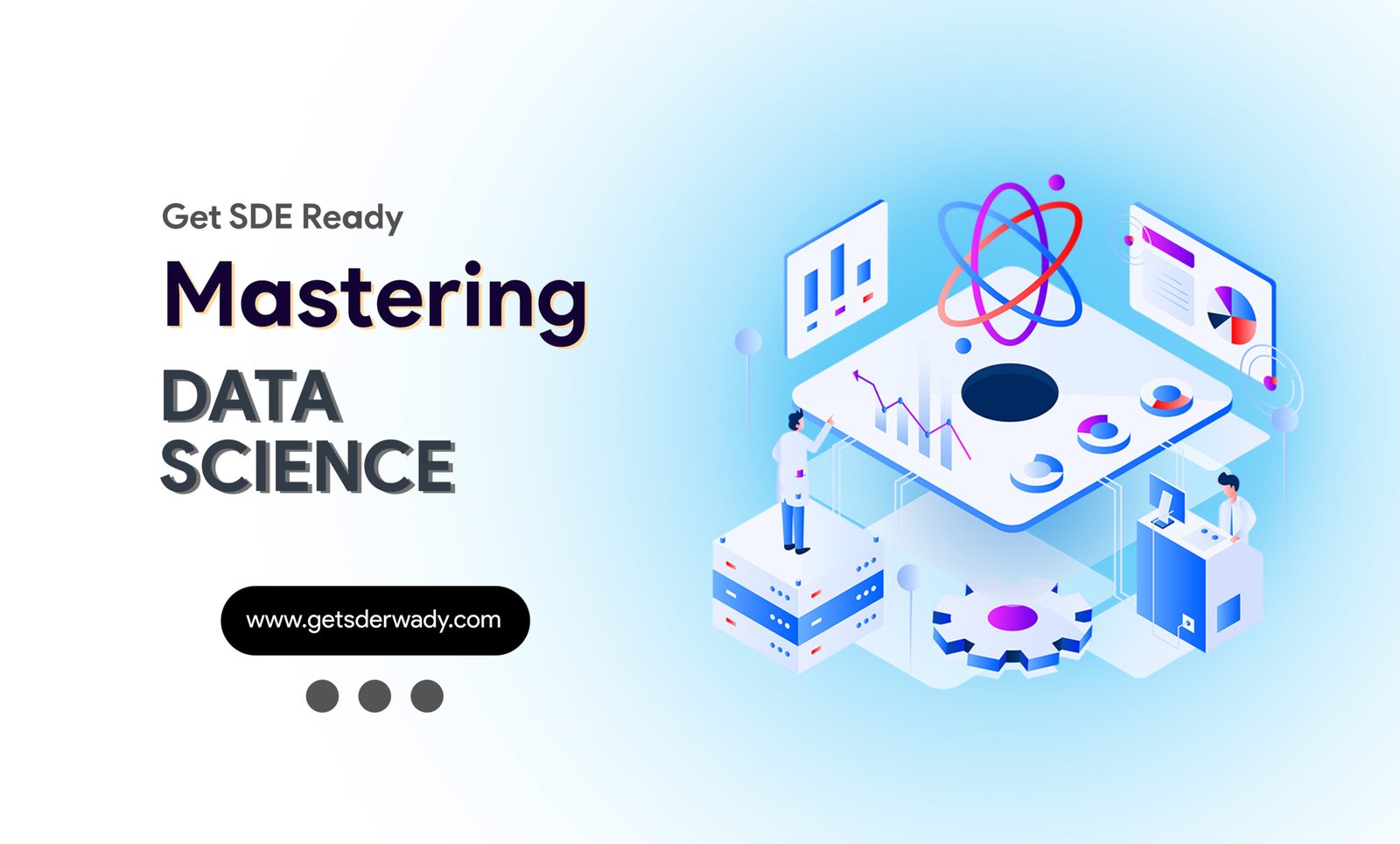
Essentials of Machine Learning and Artificial Intelligence
- 65+ Live Classes & Recordings
- 24*7 Live Doubt Support
- 22+ Hands-on Live Projects & Deployments
- Comprehensive Notes
- Topic-wise Quizzes
- Case Studies
- Access to Global Peer Community
- Interview Prep Material
Buy for 65% OFF
₹20,000.00 ₹6,999.00
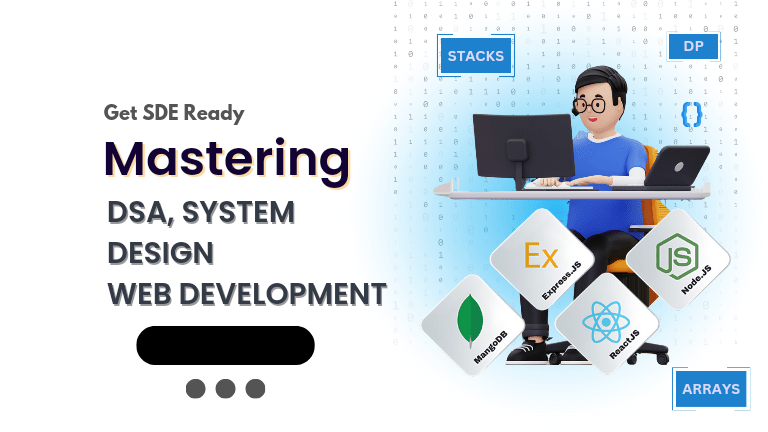
Fast-Track to Full Spectrum Software Engineering
- 120+ Live Classes & Recordings
- 24*7 Live Doubt Support
- 400+ DSA Practice Questions
- Comprehensive Notes
- HackerRank Tests & Quizzes
- 12+ live Projects & Deployments
- Case Studies
- Access to Global Peer Community
Buy for 57% OFF
₹35,000.00 ₹14,999.00
Reach Out Now
If you have any queries, please fill out this form. We will surely reach out to you.
Contact Email
Reach us at the following email address.
Phone Number
You can reach us by phone as well.
+91-97737 28034
Our Location
Rohini, Sector-3, Delhi-110085